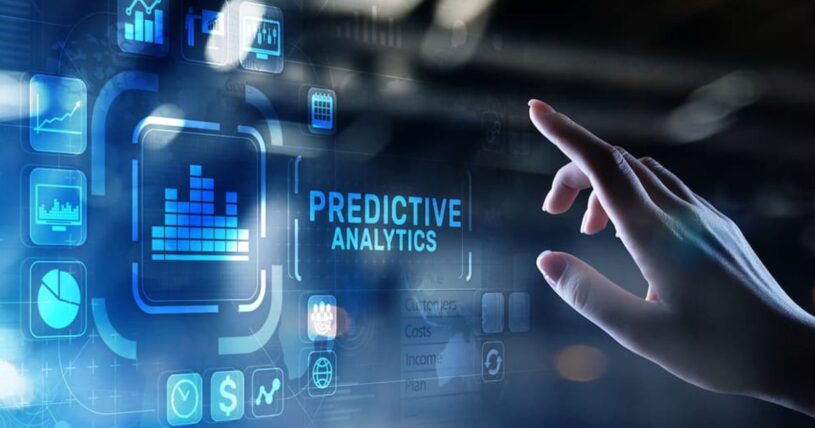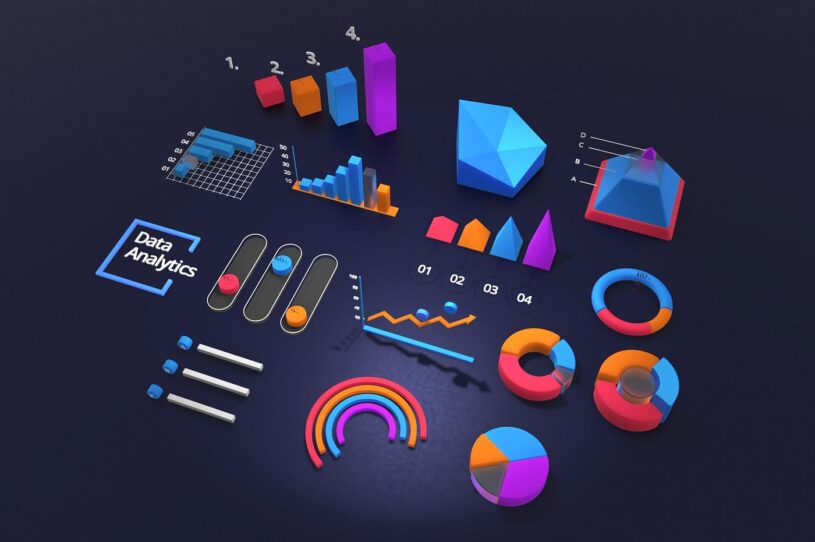What if instead of waiting for problems to happen and relying on luck, businesses could predict issues and make plans in advance? This is exactly what predictive analytics can do for your business. It’s a game-changer that has revolutionized how many companies operate.
For instance, in healthcare, hospitals can now foresee potential health issues and take care of patients better. Banks use it to detect fraud and save significant amounts of money. Retailers can better manage their inventory and boost sales. Manufacturers can predict when machines might break down, preventing costly disruptions. Delivery companies use it to find the fastest routes, saving time and fuel costs. With predictive analytics, businesses can save time and money while making more intelligent decisions, improving customer satisfaction, and staying ahead of the competition. In today’s article, we will explore how predictive analytics works, its key benefits, and provide real-world examples of its impact on industries.
How predictive analytics works

According to Google Cloud blog, Predictive analytics is: “The process of using data to forecast future outcomes. The process uses data analysis, machine learning, artificial intelligence, and statistical models to find patterns that might predict future behavior. Organizations can use historic and current data to forecast trends and behaviors seconds, days, or years into the future with a great deal of precision.”
At its core, data analysts employ predictive models to uncover associations among various elements within specific datasets. Once the data-gathering process concludes, a statistical model is crafted, trained, and adjusted to produce forecasts. The process of establishing predictive analytics follows a sequence of fundamental stages:
- Problem definition;
- Data acquisition and organization;
- Data preprocessing;
- Development of predictive models;
- Validation and deployment of results;
Key benefits of predictive analytics
Incorporating predictive analytics into business operations is a strategic move that holds immense potential for companies across various industries. By harnessing the power of data and technology, predictive analytics provides various invaluable benefits, ultimately helping organizations make smarter decisions, streamline processes, and gain a competitive edge.
Improved decision-making
Predictive analytics empowers businesses to make more informed choices by offering insights based on data-driven predictions. This not only reduces risks but also maximizes opportunities. For instance, a retail company can use predictive analytics to anticipate which products will be in high demand during specific seasons, allowing them to stock up on those items, optimize inventory levels, and meet customer demand effectively.
Increased efficiency
Predictive analytics streamlines operations by automating tasks and optimizing workflows, significantly saving time and resources for your business. For example, a manufacturing company can use predictive analytics to implement predictive maintenance, which means machines are only serviced when needed, reducing downtime and increasing production efficiency.
Improved customer experience

Predictive analytics gives businesses a deeper understanding of customer behavior and preferences, allowing the tailoring of offerings and marketing strategies for higher customer satisfaction. For instance, an e-commerce company can use predictive analytics to recommend products to customers based on their previous purchases, increasing cross-selling opportunities and customer satisfaction.
Cost reduction
Predictive analytics allows for early issue detection, preventive maintenance, and efficient resource allocation, leading to substantial cost savings. For example, in the energy sector, power plants can employ predictive analytics to anticipate equipment failures, schedule maintenance before a critical breakdown occurs, reduce downtime, and save on expensive emergency repairs. Or, transportation companies use predictive analytics to optimize their fleet management, scheduling maintenance and routes efficiently, ultimately decreasing operational costs.
Competitive advantage
Companies that leverage predictive analytics gain a competitive edge by staying ahead in the market responding proactively to changes, and often outperforming their competitors. For instance, in the retail industry, companies can use predictive analytics to adjust pricing in real time based on market dynamics and consumer behavior, allowing them to maintain a competitive pricing strategy. In finance, hedge funds and investment firms use predictive analytics to make data-driven investment decisions, which can lead to higher returns and a competitive edge.
Industries that benefit from predictive analytics the most

Using predictive analytics strategically is vital for many industries. Let’s look at the industries that get the most from predictive analytics and how it changes how they work.
Banking and finance industry
Predictive analytics is becoming increasingly important in the financial sector. As per Statista’s projections, the worldwide predictive analytics market is expected to reach $41.52 billion by the year 2028, which means banks should already now start seriously considering implementing predictive analytics into their systems to stay competitive. And it is no wonder, as predictive analytics addresses key aspects of banking and financial operations. Let’s briefly delve into some of these aspects:
It helps detect fraud by analyzing customer behaviors and patterns. For customer engagement and churn prevention, it provides insights into potential segments and identifies at-risk customers. Predictive analytics also enables targeted marketing, improves customer service, and boosts profitability by understanding customer behavior and preferences. Besides, it strategically plans cash liquidity, guaranteeing customers that their needs are met. In risk management, it assists in informed lending decisions, reducing potential defaults and offering multiple AI-driven customer retention strategies. It also empowers banks to predict trends, shape a profitable future, and adapt to changing market conditions.
Let’s take a look at the case of OTP Bank implementing predictive analytics. OTP Bank, a key player in the Hungarian banking sector for over six decades, sought to improve the speed and efficiency of its mortgage, loans, and lease application processes while ensuring sound decision-making to minimize loan defaults. To achieve this, OTP Bank employed advanced statistical modeling and predictive analysis. This solution allowed the bank to evaluate and approve applications accurately, drawing from a wealth of data sources to assess applicants comprehensively. By identifying patterns and predicting risks, the bank could swiftly approve low-risk applicants and develop more precise revenue forecasts. This approach significantly bolstered the bank’s capital reserve, reducing loan defaults and improving the accuracy of revenue forecasts by considering changes in loan payments and financial industry fluctuations. Practically, OTP Bank benefits from predictive analytics by reducing risk, minimizing loan defaults, and making more informed, evidence-based decisions.
Healthcare
Not only the financial sector benefits from predictive analytics but also healthcare. Wouldn’t it be great if doctors could predict a patient’s risk of complications during surgery and take preventive measures?
Well, now they definitely can. By leveraging predictive models and data-driven insights, healthcare providers can proactively detect potential health issues, personalize treatments based on individual profiles, efficiently allocate resources, reduce hospital readmissions through early interventions, improve patient care and outcomes, and optimize cost-efficiency. Interestingly, in a study conducted in 2021, researchers explored the potential of machine learning models to predict the severity of illness in COVID-19 patients. The findings indicated that ML accurately predicted clinical severity using only the data collected within 24 hours of hospitalization.
With the ability to predict risks and trends, predictive analytics has become an indispensable tool in healthcare, improving decision-making, resource management, and overall patient well-being. It is no surprise that more and more healthcare institutions employ predictive analytics.
For example, Mersey Care NHS Foundation Trust adopted predictive analytics through the Management and Supervision Tool (MaST) to improve care for individuals with mental health problems. This tool, powered by a “risk of crisis” algorithm, identifies patients at risk of a mental health crisis within the next 28 days. It enables community mental health teams to allocate resources more effectively to those in greatest need, streamlining caseload management and improving care prioritization. The implementation benefits both patients and healthcare providers by offering more personalized care, reducing caseload complexity, and improving the efficiency of resource allocation.
Retail
How do online shops quickly change prices on their websites according to the situation in the market? What technology enables retailers to offer customers highly personalized discounts and promotions individually? Yes, predictive analytics.
Predictive analytics leverages data and statistical algorithms to predict future events and consumer behavior. It uses historical and real-time data to forecast various aspects of retail operations, ultimately helping retailers make informed decisions and improve their business outcomes. Here are some key ways predictive analytics is used in retail:
- Demand forecasting;
- Inventory management;
- Price optimization;
- Customer segmentation and personalization;
- Fraud detection;
- Assortment planning;
- Store location and expansion;
- Marketing and promotion effectiveness;
- Churn prediction;
- Supply chain management;
For instance, Walmart’s case is really impressive because of the adoption of predictive analytics. The numbers speak volumes: predictive analytics helped increase their online sales from 10% to 15%, leading to a significant $1 billion in additional revenue. Through predictive analytics, Walmart has significantly optimized inventory management, reduced overstock, and made sure that high-demand products remain consistently in stock. This not only saved costs but also boosted profits. Furthermore, they’ve achieved a 15% increase in employee productivity by employing AI for inventory monitoring. Finally, Walmart’s personalized offers, driven by behavioral analytics and customer data, have fostered customer loyalty.
Summary

Predictive analytics is a transformative force that benefits every industry worldwide. Its application offers specialized insights, cost savings, and a competitive edge. Implementing predictive analytics in your business is a strategic decision, aligning you with a growing market set to expand even further. The continual evolution of predictive analytics promises a future where informed decisions and data-driven strategies are the keys to staying ahead of the competition.
